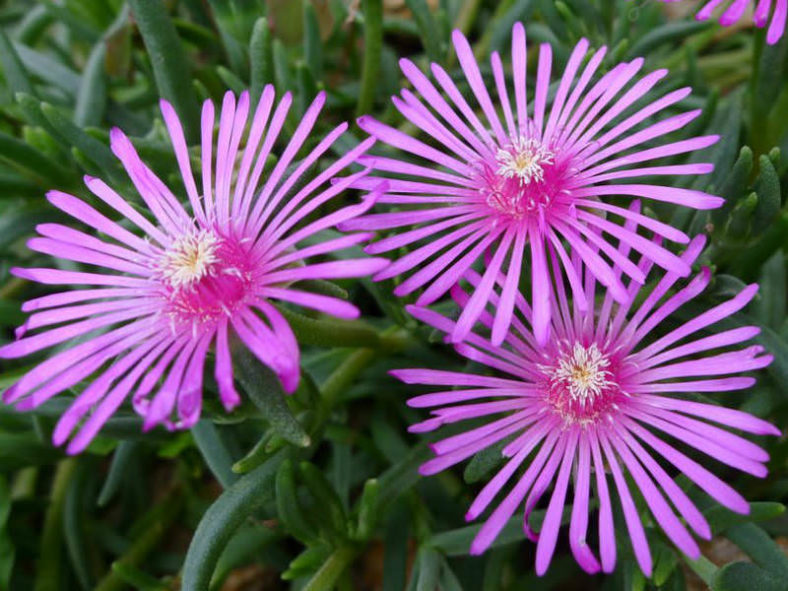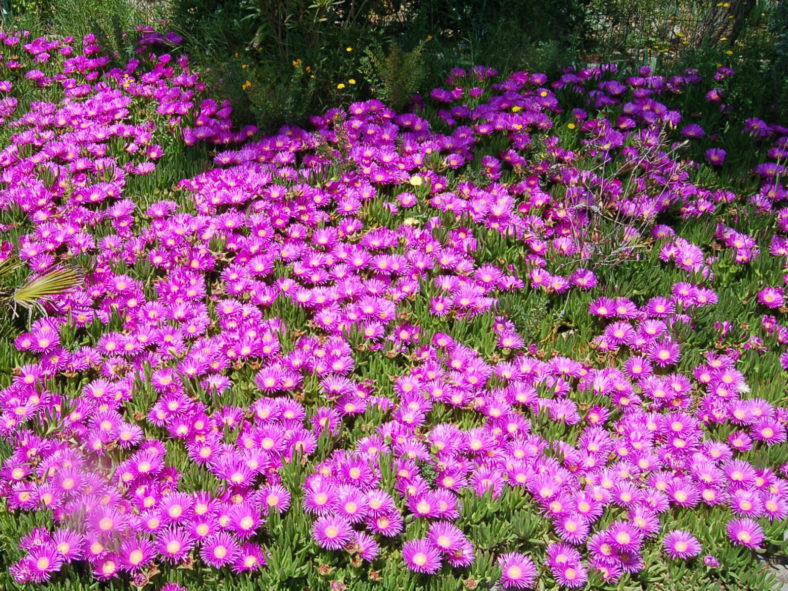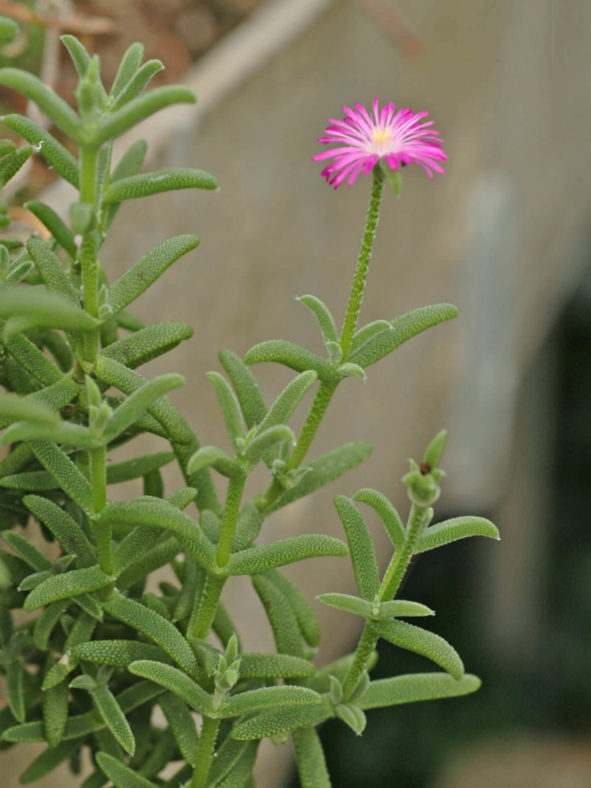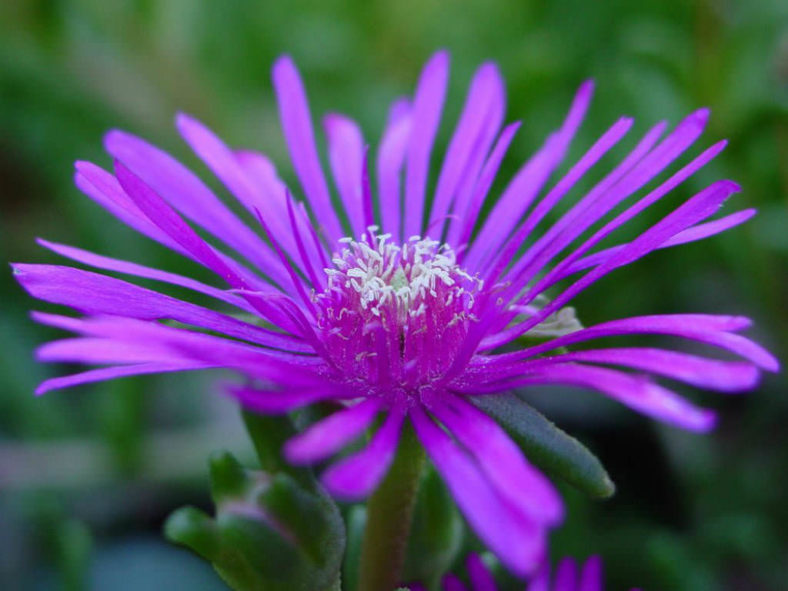Scientific Name
Delosperma cooperi (Hook.f.) L.Bolus
Common Name(s)
Cooper's Hardy Ice Plant, Cooper's Ice Plant, Hardy Ice Plant, Hardy Purple Ice Plant, Pink Carpet, Purple Ice Plant, Trailing Ice Plant
Synonym(s)
Mesembryanthemum cooperi
Scientific Classification
Family: Aizoaceae
Subfamily: Ruschioideae
Tribe: Ruschieae
Genus: Delosperma
Etymology
The specific epithet "cooperi" (pronounced "koo-PER-ee") honors Thomas Cooper (1815-1913), an English botanist and plant explorer who collected plants in South Africa from 1859 to 1862.
Origin
Delosperma cooperi is native to Lesotho and South Africa (Free State).
Description
Delosperma cooperi is a mat-forming succulent with trailing stems, needle-like leaves, and beautiful daisy-like flowers. It can grow up to 6 inches (15 cm) tall and spread 24 inches (60 cm). The leaves are light green and nearly cylindrical, measuring up to 2 inches (5 cm) in length and up to 0.25 inches (0.6 cm) in diameter.
This plant blooms continuously from early summer to fall. The flowers are produced in such quantities that they cover the foliage.

Hardiness
USDA hardiness zones 5a to 9b: from -20°F (−28.9°C) to 30°F (-1.1°C).
How to Grow and Care
This succulent is indigenous to South Africa, where it is an evergreen. Belying its origin, this hardy perennial can be grown in USDA zones 5 to 9. At the northern end of this range, however, note two things:
- Winter hardiness is not a given. Purple Ice Plant may not survive a difficult winter in USDA zone 5.
- Its leaves will not be evergreen, even if it does survive. Treat it as an herbaceous perennial.
Planting it in full sun and superbly well-drained soil are critical steps to growing this sun-loving groundcover successfully. Avoid planting in clayey soil unless you want to improve percolation with soil amendments. Purple Ice Plants are drought-resistant and do not require fertile soils, but hate sitting in water.
Despite their resistance to drought and dislike of wet feet, they will profit from occasional watering in the summer heat, as long as the drainage is excellent.
Reduce watering in fall to help harden it off for winter, as cold will be less likely to damage the succulent leaves if they are not quite so full of water.
Learn more at How to Grow and Care for Delosperma.
Links
- Back to genus Delosperma
- Succupedia: Browse succulents by Scientific Name, Common Name, Genus, Family, USDA Hardiness Zone, Origin, or cacti by Genus
Photo Gallery
Click on a photo to see a larger version.


